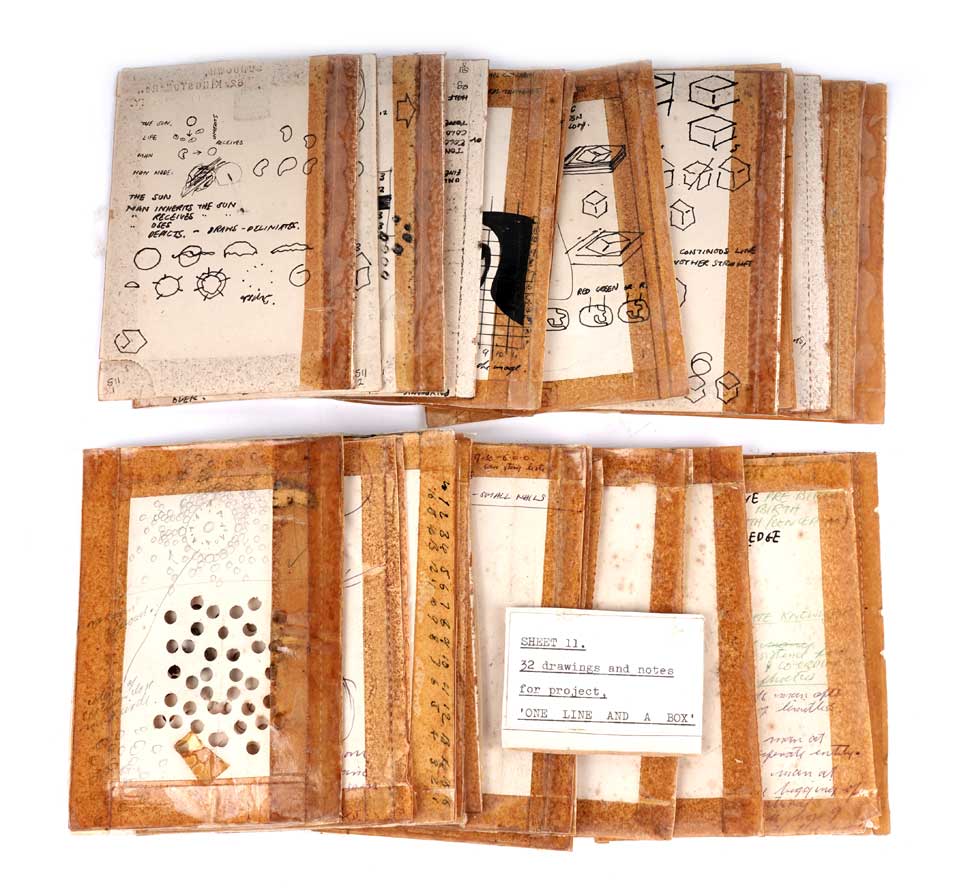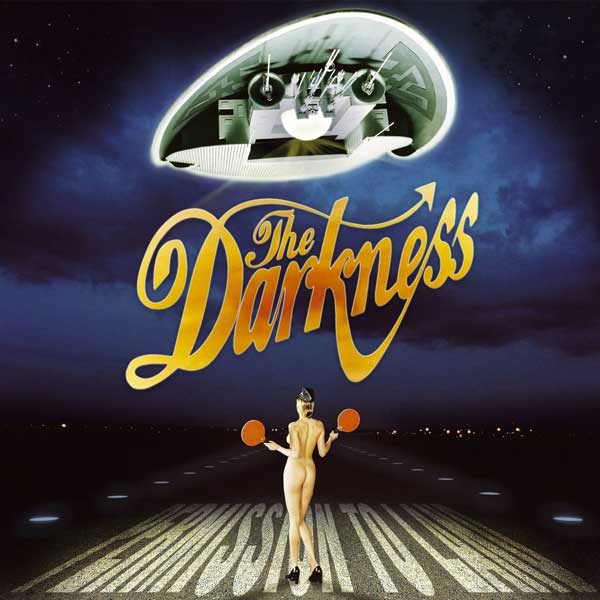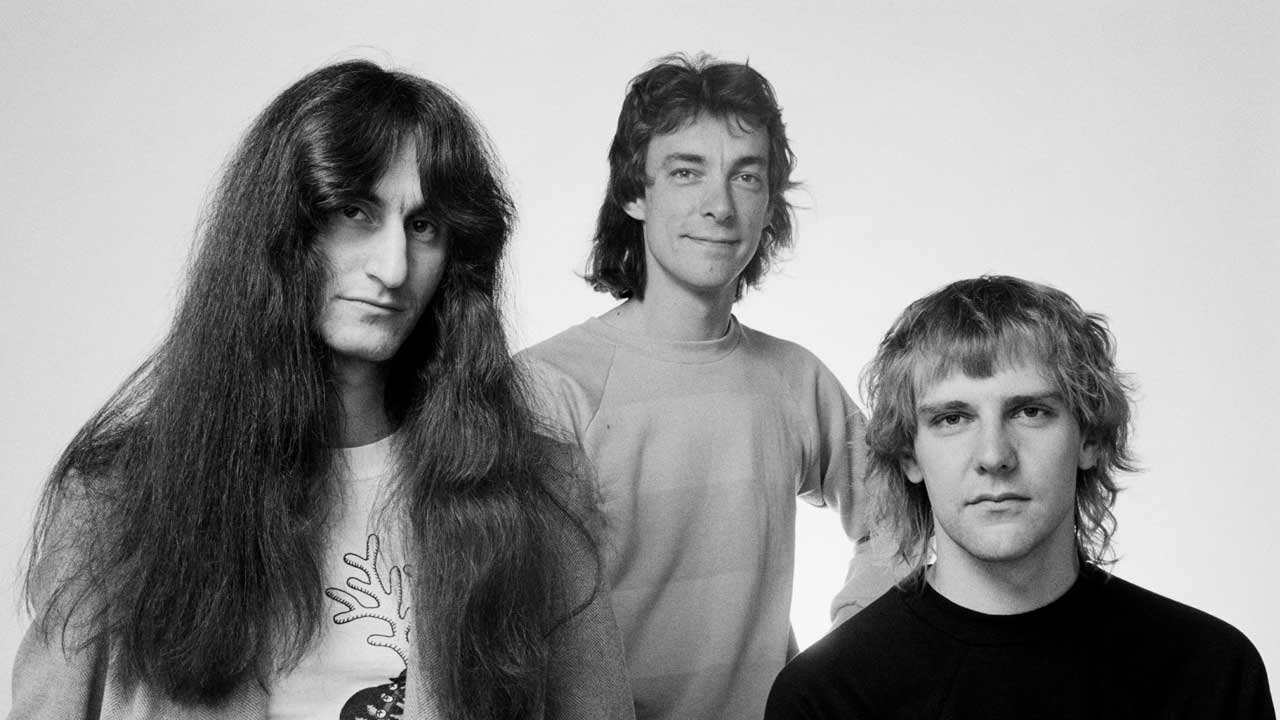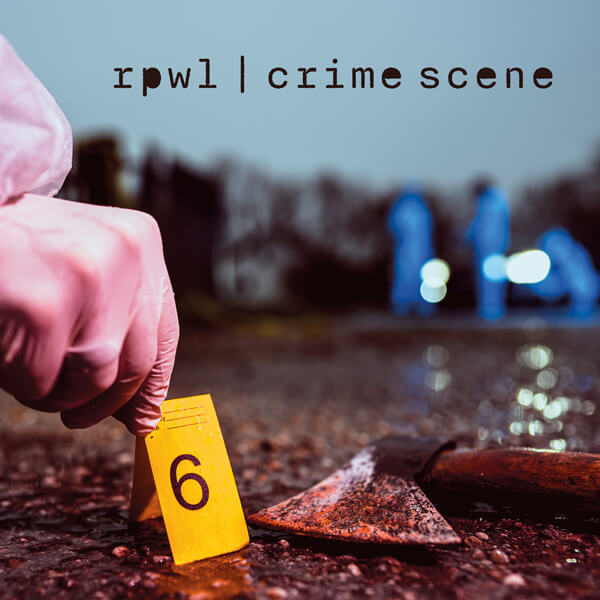
Feature Photo: Look Studio
The word “baby” is one of the most frequently used and beloved terms in the world of music. It has been a cornerstone in countless song titles across genres, symbolizing everything from affection and tenderness to heartache and loss. Its universal appeal has made “baby” an integral part of popular music, capturing emotions that resonate with listeners on a deeply personal level. From iconic rock ballads to soulful R&B classics, songs featuring the word “baby” span decades and genres, each offering its own unique take on love, passion, and relationships.
In this article, we explore ten of the best songs with the word “baby” in the title. Starting with The Ronettes’ “Be My Baby,” we dive into a song that defined the Wall of Sound and inspired generations of musicians, including Brian Wilson, whose own track “Don’t Worry Baby” echoes its influence with a tender, reassuring message. Eddie Money’s “Baby Hold On” offers a powerful rock anthem filled with optimism and energy, contrasting sharply with the bluesy depths of Led Zeppelin’s “I Can’t Quit You Baby,” a song that grapples with emotional turmoil and an inescapable love. Linda Ronstadt’s cover of “Ooh Baby Baby” brings a soulful vulnerability, echoing Smokey Robinson’s original while adding her own heartfelt touch, much like Toby Beau’s soft rock hit “My Angel Baby” captures the innocence and purity of love.
Bob Dylan’s “It’s All Over Now, Baby Blue” showcases his lyrical genius, offering a poignant farewell wrapped in poetic ambiguity, standing in stark contrast to the playful rock ‘n’ roll spirit of The Beatles’ “Baby’s in Black,” which deals with love and mourning in its own unique way. The Supremes’ “Baby Love” brings Motown’s signature sound into the mix, with its infectious rhythm and soaring harmonies, while Grand Funk Railroad’s “Miss My Baby” carries a heavier, more introspective tone, exploring the pain of separation. Finally, Willie Dixon’s “I Can’t Quit You Baby,” famously covered by Led Zeppelin, digs deep into the blues, providing an emotionally raw examination of heartache and longing.
These ten songs, while diverse in style and sentiment, all share a common thread—the power of “baby” to evoke strong, universal emotions. Whether capturing the highs of newfound love or the lows of heartbreak, they stand as timeless examples of how one simple word can carry a world of meaning.
# 10 – Baby Did A Bad Bad Thing – Chris Isaak
“Baby Did a Bad Bad Thing” by Chris Isaak is the first song on this list of the 10 Best Songs with the Word ‘Baby’ in the Title. Released as the opening track of his 1995 album Forever Blue, this sultry and intense song is one of Isaak’s most provocative works. Co-produced by Isaak and Erik Jacobsen, the track blends rock, blues, and seductive undertones, reflecting the dark emotional themes of the album. The song gained significant mainstream attention when it was featured in Stanley Kubrick’s 1999 film Eyes Wide Shut, starring Tom Cruise and Nicole Kidman. Its sensuality and haunting tone perfectly suited the movie’s enigmatic and erotic atmosphere, further cementing the song’s lasting appeal.
The lyrics of “Baby Did a Bad Bad Thing” express the torment of a lover wronged by betrayal, encapsulated in the repeated line “Baby did a bad bad thing.” Isaak’s raw vocal delivery adds depth to the emotional conflict, as he explores feelings of love, pain, and revenge. The song’s dark, bluesy rhythm, driven by a driving beat and gritty guitar riffs, underscores the intensity of the lyrics. Isaak’s voice, alternating between a haunting whisper and a powerful cry, captures the sense of helplessness and frustration as he grapples with the reality of the lover’s betrayal.
The song combines themes of obsession, heartbreak, and sensuality. Lines like “You ever love someone so much you thought your little heart was gonna break in two?” illustrate the depth of the protagonist’s emotional turmoil. The song’s straightforward, repetitive structure mirrors the obsessive nature of the speaker’s thoughts as he fixates on the betrayal. The slow-building tension in the music reflects the escalating emotional intensity, creating an atmosphere of both longing and despair.
Read More: Top 10 Chris Isaak Songs
# 9 – Miss My Baby – Grand Funk Railroad
“Miss My Baby” is a scorching track from Grand Funk Railroad’s 1976 album Good Singin’ Good Playin’, produced by the legendary Frank Zappa. This track, clocking in at over seven minutes, showcases the band’s raw emotional intensity and blues-rock roots, while also reflecting a more personal, heartfelt side of the band’s music. With Mark Farner on lead vocals and guitar, the song explores the longing and loneliness of missing a lover, drawing listeners in with its simple but emotionally charged lyrics. The band had temporarily disbanded before reuniting to create this album with Zappa, marking a pivotal moment in their career, which adds weight to the themes of loss and reunion present in the song.
The lyrical content of “Miss My Baby” speaks directly to the deep emotional pain of separation. Farner sings lines like “But, I miss my baby, I’m lookin’ for a lady, said I miss my baby, I think I’m goin’ crazy” with a sense of desperation and confusion, tapping into the universal experience of missing someone dearly. Musically, the track starts off slow and builds in intensity, with the steady pulse of Don Brewer’s drumming and Mel Schacher’s powerful bass adding a driving force to the narrative of love and longing. The song’s extended instrumental sections, characterized by soulful guitar work, allow the emotion to breathe, giving the listener time to reflect on the deep sense of loss conveyed by the lyrics.
Recorded in 1976 at MCA Records with the production genius of Zappa, the song also reflects the collaborative synergy between the band and their iconic producer. Zappa, though typically known for his avant-garde and complex compositions, helped to bring out a raw and honest sound in Grand Funk Railroad. His guidance in the studio allowed the band to focus on delivering an emotional punch while keeping the arrangements relatively simple, a style that matched the heart-wrenching message of “Miss My Baby.”
Read More: Grand Funk Railroad’s Best Song On Each Of Their Studio Albums
# 8 – Angel Baby – Toby Beau
“My Angel Baby” by Toby Beau is a soft rock hit from 1978 that reached number one on the U.S. Easy Listening chart and peaked at number 13 on the Billboard Hot 100, making it the band’s most successful song. Written by band members Danny McKenna and Balde Silva, this track was part of their self-titled album Toby Beau. The song also gained traction in Canada, where it reached number 10 on the RPM Top 100 chart. With its gentle melody and heartfelt lyrics, “My Angel Baby” became a quintessential soft rock ballad of the late 1970s, perfectly capturing the era’s focus on smooth, melodic soundscapes.
“My Angel Baby” reflects the emotional turmoil of a love on the verge of ending. The protagonist laments the changes in his relationship, recognizing that his partner may be preparing to leave. Lines like “What’s breaking is my heart, you’ve got leaving on your mind” convey the deep sense of loss and sadness. Despite the pain, the refrain, “But you’re my angel baby, for the rest of the night,” holds onto the fleeting hope of salvaging the relationship, if only for a moment. The lyrics tap into themes of longing, love, and heartbreak, offering a poignant glimpse into the fragility of romantic connections.
The light use of guitar and keyboards, combined with McKenna’s smooth vocals, creates a soothing, melancholic atmosphere. The song’s production, under the RCA label, complements its tender lyrics, making it both a radio-friendly hit and a relatable anthem for listeners experiencing love’s ups and downs. As the third song on this list, “My Angel Baby” stands apart with its gentle melody and introspective lyrics, adding a softer, more contemplative tone to the lineup of ‘baby’-themed songs.
# 7 – Baby’s In Black – The Beatles
“Baby’s in Black” by The Beatles is a melancholic folk rock song from their 1964 album Beatles for Sale in the UK and Beatles ’65 in the U.S. Written by John Lennon and Paul McCartney, the song stands out with its unique blend of folk rock and a waltz-like rhythm, and it features the signature harmonized vocals of Lennon and McCartney. Recorded on August 11, 1964, at EMI Studios in London, and produced by George Martin, this track demonstrates The Beatles’ growing experimentation with darker themes and more complex song structures, departing from the upbeat pop sensibilities of their earlier work.
“Baby’s in Black” tells the story of unrequited love, centering on a narrator who pines for a woman dressed in black, mourning a lost lover. The repeated refrain, “Oh dear, what can I do? Baby’s in black and I’m feeling blue,” highlights the emotional weight of the situation, as the narrator is unable to win her affection while she remains fixated on someone else. The song’s sorrowful tone is further amplified by the minor chord progressions and somber melody, reinforcing the themes of heartbreak and loss.
“Baby’s in Black” is characterized by its mid-tempo 6/8 time signature, which gives it a waltz-like feel. The harmonies between Lennon and McCartney provide an added depth to the song, giving it a haunting quality that distinguishes it from the more upbeat tracks on Beatles for Sale. The stripped-back production, featuring simple instrumentation of guitars, bass, and drums, allows the vocal interplay and poignant lyrics to take center stage. Compared to other songs on this list, such as the upbeat “My Angel Baby” by Toby Beau, “Baby’s in Black” offers a more somber, reflective take on love, showcasing The Beatles’ ability to explore a wide range of emotional landscapes.
As the fourth song on this list, “Baby’s in Black” introduces a darker and more introspective tone, contrasting with the lighter themes of earlier entries. Its blend of folk rock and emotional depth makes it a memorable and important addition to the catalog of ‘baby’-themed songs, further highlighting The Beatles’ evolving songwriting and musical maturity during this period.
Read More: Complete List Of Fan’s Favorite Beatles Songs
# 6 – Baby Love – The Supremes
“Baby Love” by The Supremes is a timeless Motown classic, released in September 1964, and written by the powerhouse team Holland–Dozier–Holland. Featured on their second studio album Where Did Our Love Go, the song became an instant hit, topping the U.S. Billboard Hot 100 for four weeks and reaching number one in the UK as well. This success marked the Supremes as the first Motown act to achieve multiple number-one singles in the U.S., solidifying their status as one of the most successful American pop groups of the 1960s.
The song’s production, overseen by Berry Gordy’s insistence for a chart-topping follow-up to “Where Did Our Love Go,” reuses many of the signature elements of that earlier hit. Diana Ross’s soft and pleading lead vocals, backed by Florence Ballard and Mary Wilson’s “baby-baby” harmonies, are complemented by the vibrant instrumentation of the Funk Brothers, with notable foot-stomping effects from teenager Mike Valvano. The infectious rhythm, upbeat melody, and catchy lyrics made “Baby Love” an anthem of young romance and heartache, capturing the quintessential Motown sound that would define an era.
Read More: Top 10 Supremes Songs
# 5 – It’s All Over Now Baby Blue – Bob Dylan
Bob Dylan’s “It’s All Over Now, Baby Blue,” from his Bringing It All Back Home album, is a quintessential folk rock anthem that marks the end of an era both musically and personally for Dylan. Released on March 22, 1965, and recorded with just acoustic guitar, harmonica, and bass, the song features Dylan’s cryptic, poetic lyrics that bid farewell to the mysterious “Baby Blue.” The song’s minimalist instrumentation contrasts with the depth of its lyrics, which are widely regarded as an allegorical farewell, though interpretations vary about the identity of “Baby Blue.” Some speculate it refers to Dylan’s relationship with Joan Baez, while others see it as a break from his folk roots, signaling his transition toward rock music.
The lyrics are rife with Symbolist influences, creating a vivid tapestry of imagery that captures the essence of change and letting go. From “the orphan with his gun” to “seasick sailors,” Dylan paints a picture of a world in flux, one in which the listener must leave behind the past to embrace something new. The repeated refrain, “And it’s all over now, Baby Blue,” underscores the inevitability of this transformation, conveying a sense of melancholy and finality. Dylan’s use of abstract, surrealistic language gives the song a timeless quality, allowing it to be interpreted in multiple ways.
Critically, “It’s All Over Now, Baby Blue” has been recognized as one of Dylan’s most significant songs, standing out for its lyrical complexity and emotional depth. The track became an influential piece for many artists, with notable covers by Them, Joan Baez, and the Byrds. Them’s 1966 version, in particular, became a garage rock staple and influenced countless bands in the genre, while Beck later sampled it in his 1996 single “Jack-Ass.” As the first song on this list, “It’s All Over Now, Baby Blue” introduces a deeply reflective, poetic tone, setting the stage for other songs featuring the word “baby” by offering a more contemplative, metaphorical interpretation of love, change, and farewell.
Read More: Best Bob Dylan Songs of the 1960’s
# 4 – Baby Hold On – Eddie Money
“Baby Hold On” stands as one of Eddie Money’s most recognizable and enduring songs, released in 1977 as the lead single from his debut album Eddie Money. Co-written by Money and guitarist Jimmy Lyon, the track became a major commercial success, peaking at number eleven on the Billboard Hot 100, number four on the Canadian Hot 100, and reaching number nineteen on the Kent Music Report in Australia. The song’s upbeat, rock-infused sound helped solidify Money’s place in the rock world and marked his debut as a chart-topping artist.
With its catchy, guitar-driven introduction, “Baby Hold On” hooks the listener immediately. The song builds in intensity as Money’s energetic vocal performance conveys the urgency and passion behind the message. The track urges a lover to remain committed despite the uncertainties of life, with lyrics like “Whatever will be, will be / The future is ours to see,” echoing the famous refrain from the song “Que Sera, Sera.” This subtle nod to a well-known cultural reference gives the song a broader appeal while maintaining its original rock edge. The optimistic tone of the lyrics, encouraging perseverance in love, stands in contrast to some of the other “baby” songs on this list that deal with themes of heartbreak or loss.
Read More: Top 10 Eddie Money Songs
# 3 – Ooo Baby Baby – Linda Ronstadt
Linda Ronstadt’s 1978 cover of “Ooo Baby Baby” brought a fresh, soulful energy to a Smokey Robinson and the Miracles classic. Featured on her double-platinum album Living in the USA, Ronstadt’s rendition of the song is notable for its emotional depth and stunning vocal performance. Produced by Peter Asher, the track features a smooth, saxophone-infused arrangement, with a standout solo by David Sanborn that lends a contemporary flair to the original Motown ballad. Released as a single, Ronstadt’s version peaked at number seven on the Billboard Hot 100 and reached number two on the Adult Contemporary chart, demonstrating her ability to transcend genre boundaries and bring soul, pop, and country elements together.
Ronstadt’s ability to take a beloved Motown classic and infuse it with her unique sound made her cover of “Ooo Baby Baby” a timeless piece. The track became one of her signature songs, proving her versatility as a vocalist who could seamlessly move between rock, country, and soul. Moreover, the song’s performance on the charts underscores its wide appeal, as it not only found success on the Hot 100 but also charted on the R&B and Country singles charts. Her performance alongside Smokey Robinson in the Motown 25 special in 1983 further solidified her connection to the song and highlighted its enduring place in popular music.
Read More: Top 10 Linda Ronstadt Songs That Leave You Breathless
# 2 – Tie – Be My Baby – The Ronnettes / Don’t Worry Baby – The Beach Boys
Released in August 1963, “Be My Baby” by The Ronettes became a defining song of the girl group era and one of the most iconic singles of the 1960s. Written by Phil Spector, Jeff Barry, and Ellie Greenwich, and produced by Spector himself, the track exemplifies his groundbreaking Wall of Sound technique, a lush and layered approach to production that had a lasting influence on pop music. Ronnie Spector’s captivating lead vocal, paired with the dramatic orchestration, makes this song a timeless classic. The song reached number two on the U.S. Billboard Hot 100 and number four in the UK, solidifying The Ronettes as one of the leading acts of their time.
The song’s production is an integral part of its impact. Recorded at Gold Star Studios in Los Angeles with Spector’s de facto house band, the Wrecking Crew, it marked Spector’s first time using a full orchestra to achieve his Wall of Sound. The track’s pulsating rhythm, driven by the unmistakable drum pattern played by Hal Blaine, sets the stage for Ronnie Spector’s unforgettable vocals. Her delivery of the heartfelt lyrics, “Be my, be my baby,” carries a vulnerability and power that resonate with listeners to this day. The harmony-laden backing vocals of Estelle Bennett and Nedra Talley add richness to the track, though Ronnie’s presence is the emotional core of the song.
The lyrics, simple but deeply emotive, are a plea for love and devotion: “I’ll make you happy, baby, just wait and see / For every kiss you give me, I’ll give you three.” These lines emphasize the song’s message of unconditional love and commitment. The chorus, with its iconic repetition of “Be my baby,” captures the intensity of longing and desire, making it a perfect example of the emotionally charged pop songs of the era.
“Be My Baby” became a touchstone for artists across generations, including Brian Wilson of The Beach Boys, who famously cited it as his favorite song and wrote “Don’t Worry Baby” in response. The song’s influence can be heard in countless tracks that followed, particularly in its innovative use of rhythm and orchestration. Its cultural significance has only grown over the years, and in 2006, the Library of Congress added the song to the U.S. National Recording Registry, further cementing its legacy as one of the greatest recordings of all time.
Read More: 10 Ronettes Songs We Love So Much
“Don’t Worry Baby,” released by The Beach Boys in 1964, stands as one of the band’s most beloved and enduring songs. Written by Brian Wilson and Roger Christian, the song appeared on Shut Down Volume 2 and was released as the B-side to the hit single “I Get Around.” However, “Don’t Worry Baby” managed to chart separately, peaking at number 24 on the Billboard Hot 100. The song captures Wilson’s signature California sound with a twist of vulnerability, making it a tender and introspective contrast to the band’s usual surf rock anthems.
The inspiration for the song came from Brian Wilson’s deep admiration for the Ronettes’ “Be My Baby.” The rhythmic structure, instrumentation, and overall arrangement of “Don’t Worry Baby” are heavily influenced by Phil Spector’s Wall of Sound technique. Despite these similarities, “Don’t Worry Baby” sets itself apart with its emotive lyrics and introspective theme. In contrast to the boldness of “Be My Baby,” the song’s lyrics tell the story of a man who’s recklessly agreed to a drag race and is filled with anxiety and regret. His girlfriend reassures him with the titular phrase, offering him emotional support in a way that goes beyond the typical themes of teenage love. The sincerity in her words provides the emotional anchor of the song, turning it into a testament to love’s ability to soothe in times of turmoil.
Musically, the song follows a familiar chord progression that echoes the style of “Be My Baby,” but it introduces subtle shifts in key to reflect the evolving emotions of the narrator. Brian Wilson’s lead vocal is one of the most lauded performances of his career, marked by both its purity and fragility. The harmonies, which include contributions from the entire band, enrich the song’s melancholy yet hopeful tone. While the track may initially seem to be about a drag race, the underlying message is one of trust and reassurance in a relationship, with the driving force of the song being love’s ability to transcend fear.
“Don’t Worry Baby” set the stage for later Beach Boys songs that would explore deeper emotional and introspective themes, marking a departure from the carefree surf songs of their earlier albums. It remains a defining moment in Brian Wilson’s songwriting career and has influenced countless artists across generations. Its enduring legacy, along with its connection to “Be My Baby,” makes it a perfect inclusion for a list focused on songs with the word ‘Baby’ in the title. The song’s universal theme of reassurance, set against a backdrop of youthful anxiety, resonates just as deeply today as it did in 1964.
# 1 – I Can’t Quit You Baby – Led Zeppelin
“I Can’t Quit You Baby” is a quintessential blues song originally written by Willie Dixon and first recorded by Chicago blues legend Otis Rush in 1956. The song’s raw emotion and slow, twelve-bar blues structure became a blues standard, capturing the pain of a man torn by an adulterous relationship he cannot easily end. Rush’s original recording featured passionate vocals and skillful guitar work, accompanied by a stellar lineup of blues musicians, including Willie Dixon on bass and Big Walter Horton on harmonica. The song’s lyrics reflect the deep torment of a man ensnared in a toxic love affair, a theme echoed in its powerful musical delivery. Rush’s version reached number six on the Billboard R&B charts, marking his arrival as a major blues artist.
Led Zeppelin’s 1969 rendition of I Can’t Quit You Baby, featured on their debut album Led Zeppelin, takes Rush’s original and transforms it with the band’s signature hard rock edge. Although the arrangement closely mirrors Rush’s 1966 re-recording, Zeppelin added their own flourishes, with Jimmy Page delivering a searing guitar solo and Robert Plant’s wailing vocals taking center stage. While Zeppelin stayed faithful to the core blues roots, their explosive energy and instrumentation brought a new intensity to the song, blending blues with the burgeoning blues rock genre. Page’s guitar break in the solo, where he plays unaccompanied for four bars, adds an element of tension before the full band crashes back in, emphasizing the emotional highs and lows of the song’s narrative.
The song’s lyrics, shared by both Rush’s original and Zeppelin’s cover, convey a deep sense of longing and frustration. Lines like “I can’t quit you baby, but I’ve got to put you down for a while” capture the struggle of wanting to break free from a relationship but being unable to fully let go. Both Rush and Plant express this emotional complexity through their performances, with Rush’s more restrained delivery contrasting with Plant’s more unrestrained, visceral vocal style. Zeppelin’s interpretation of the song keeps it firmly rooted in the blues while showcasing their distinctive sound, one that would later influence countless rock bands.
Led Zeppelin regularly performed “I Can’t Quit You Baby” live during their early years, with notable performances featured in their BBC Sessions and the Led Zeppelin DVD. However, as their setlist evolved, the song was eventually replaced by “Since I’ve Been Loving You,” another slow blues number with similar emotional weight. In comparison to other songs on this list, like The Beach Boys’ “Don’t Worry Baby,” which offers reassurance and comfort, I Can’t Quit You Baby delves into the darker side of relationships, dealing with betrayal, loss, and emotional conflict.
This song is a cornerstone in both Otis Rush’s and Led Zeppelin’s catalogs. For Rush, it solidified his place in the blues world, and for Zeppelin, it served as a testament to their deep connection to the blues tradition. The continued legacy of “I Can’t Quit You Baby,” with its numerous cover versions and its role as a blues standard, speaks to the enduring appeal of this emotionally charged composition.
Read More: Top 10 Led Zeppelin Love Songs
10 Best Songs With The Word ‘Baby’ In The Title article published on Classic RockHistory.com© 2025








![The Darkness - Get Your Hands Off My Woman (Official Music Video) [HD] - YouTube](https://img.youtube.com/vi/hI9eVW4cTR8/maxresdefault.jpg)






































